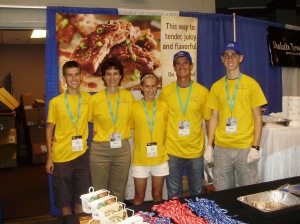“I believe in the future of agriculture with a faith born not of words but of deeds.” The National FFA Organization Creed begins with these words and it inspires us FFA members to not just talk the talk, but walk the walk. This brings up the question: What is the future of agriculture. Long story short, it’s bright.
By 2050 the world’s population is estimated to grow to 9 billion. According to the United Nations, this means that farmers will have to produce 70 percent more food to feed the growing population. While this is a daunting task, it also provides a great opportunity for everyone involved in agriculture. Now, more than ever, the entire world will rely on agriculture to provide for their basic needs. The science involved with agriculture to make crops and livestock more efficient and better producing will improve and benefit the world. However, some may view this science as controversial and react negatively towards it. But, I believe that the next generation of agriculture has another tool in its tool box.
Today, it seems like everybody is on social media. Facebook, Twitter, Instagram and blogs are popular sites to share your thoughts and ideas. Social media is also a great way for farmers to share their story, and the younger generation is more tech savvy. It’s a great match. When people like you listen to their side of the story, the truth is told and people are more informed.
What will my role be? As a senior in high school interested in agriculture, I realize that agriculture is diverse. There’s a lot you can do. I want to be an Ag teacher. I want to educate young people who are interested in agriculture, share my passion, and inspire them to be the best they can be.
The future of agriculture is indeed bright. The future of the world depends on agriculture, and I believe that agriculture can provide for the world despite having to produce 70 percent more food by 2050. The last paragraph in the National FFA Organization Creed sums up what I’m trying to say. “I believe that American agriculture can and will hold true to the best traditions of our national life and that I can exert an influence in my home and community which will stand solid for my part in that inspiring task.”

